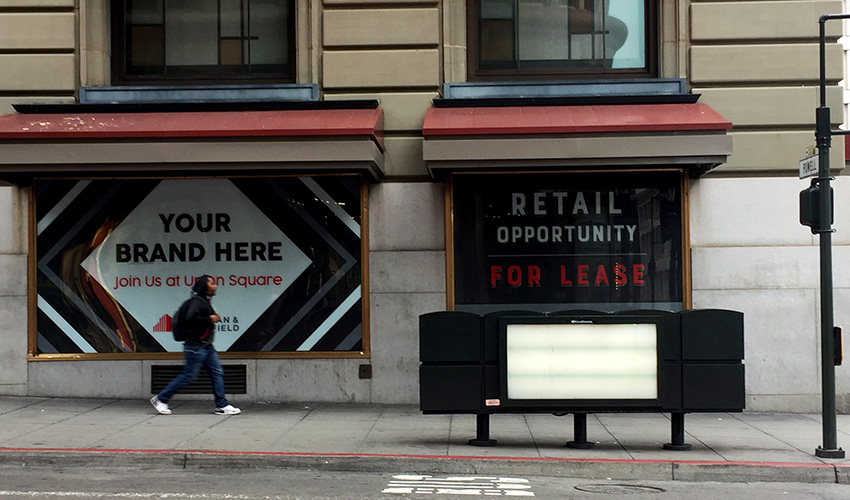SF State experts explain why retail shops are falling out of fashion

Major retailers are facing declines in sales, and that’s prompted them to shutter stores. This storefront once housed the upscale clothing store BCBG but the company was forced to close hundreds of stores after filing for bankruptcy in February.
More and more retailers are finding it hard to compete with online megastores like Amazon
From his office inside the Westfield Mall near Union Square, San Francisco State University Professor of Marketing Sanjit Sengupta has spotted a trend: stores closing. There was the upscale grocery store Bristol Farms, then Lark Creek Steakhouse and a few months ago the restaurant Cupola — all gone. More retail vacancies dot busy Market Street, he said. Across the nation there’s been a wave of malls closing and retailers shutting stores — fallout from the rise of mega-etailers like Amazon, he said.
Sengupta works at SF State’s Downtown Campus and said even with the vibrant tech and startup scene, many stores downtown are still struggling. People no longer see malls as social hubs, he said. Rather, they are cocooning at home and doing things like binge-watching Netflix. “They may be part of an online community on Facebook and that may be enough to feel socially connected,” he added. And for many shoppers, it’s just more convenient to buy goods online rather than wade through crowds or sit in traffic.
Convenience isn’t the only thing causing sales slumps. Some retailers didn’t adapt fast enough to the changing economy, Sengupta said. Retailers that didn’t rush to develop an online store in the mid- to late 1990s are still playing catch-up. This is the classic problem with disruption, according to Sengupta: The old guard thinks it will survive under the old-world business models and hasn't been quick to adapt to the new business model.
Part of being an early adapter is developing new ways to hook customers. “Amazon has tied people up with the Prime membership. Once I pay an annual membership, others have lost me. It’s like Costco: It’s not like they have a lot of variety, but people keep going back there because they are vested through their memberships,” he said. “Macy’s has been under the transactional model and they rely on brand recognition and expect loyal customers to keep walking in.”
But brick-and-mortar stores will not evaporate entirely from the landscape, said SF State Associate Professor of Marketing Ian Sinapuelas. They’ll just take on a different form. “Gone are the days when you could go into a big-box retail store and find everything you want,” he said. “The new stores are going to be smaller and they are not going to have the same inventory they used to. The physical store will be the place where people can experience the product — touch it, smell it, maybe even try it on. It’s just a showroom, essentially.”
Best Buy is a great example of a company that’s adapted to that trend and is actually thriving, Sinapuelas said. “Best Buy fell prey to ‘showrooming,’ where consumers would come in and inspect the product in the store and then buy it online at another store for a lower price,” Sinapuelas said. “But Best Buy didn’t fight it. Instead, they offered more services to people looking to go into the store and experience the product. That increased foot traffic, and the company no longer saw showrooming as a bad thing.”
Conversely, some of the successful e-tailers are now experimenting with expanding their footprint offline, but on a limited scale, Sengupta said.
“They’ve already saturated the online market,” he said. “If they want to go after more growth it’s to go after those laggards who are still shopping offline. It’s expensive to open up a brick-and-mortar store, so retailers are being pretty selective about how many stores they open and where.”
Amazon is taking over hundreds of Whole Foods locations in the U.S. and United Kingdom with the recent acquisition of the company so it will have a physical footprint. “Part of the reason Walmart has been so successful at competing with Amazon is that it had both online and offline stores,” Sengupta added.